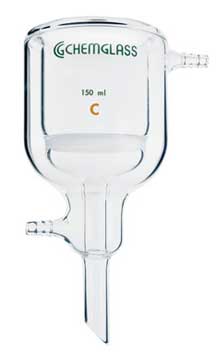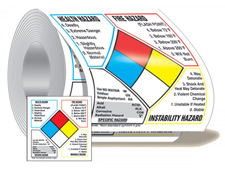



Find all of your laboratory and workplace safety supplies at Safety Emporium!
 Oliguria |
 Glossary Index |
 OSHA |
| MSDS Topics |
Free Sites | FAQ's | Regulations | Glossary | Software | Suppliers |
| Books | Forum | Poll | Fun stuff | Quiz | Store | |
| Understand your MSDS with the MS-Demystifier | Search ALL our MSDS info | |||||
In the context of chemistry and materials, organic refers to a materials based on carbon (a chemical element abbreviated as C). Additional elements that are commonly found in organic materials are hydrogen (H), nitrogen (N), oxygen (O), phosphorus (P) and sulfur (S).

An unrelated and confusing definition of organic is used most often in reference to "natural" foods. For example, a simple definition of "organic produce" is fruits or vegetables that have been raised without the use of pesticides or herbicides. Of course, many pesticides and herbicides are actually themselves organic (using either or both definitions of "organic").
Materials that are not organic are usually referred to as inorganic.

Get your organic chemistry laboratory equipment and glassware at Safety Emporium.
Organic chemicals are not necessarily harmful or toxic. Much or the human body consists of organic chemicals such as proteins, DNA, lipids and cell membranes. The food you eat, trees, grass, and every other living object contains organic compounds. The term "carbon-based life forms" is redundant (at least on this planet).
However, this does not necessarily mean all organic chemicals are good for you. For example, hydrogen cyanide (HCN) is a deadly toxin, benzene (C6H6) is a carcinogen and thalidomide is a potent teratogen (but also a useful medicine!).
When it comes to considering the toxicity of any material, remember that the dose makes the poison. Some chemicals (organic or not) present no or minimal hazard even at very high concentrations, while others can be deadly in minute amounts.
As to the idea that "natural" products are better for you and the environment - while this is sometimes true, remember that sewage is also natural...
Don't simply classify compounds as "organic" when identifying hazards. There are broad classes of organic compounds (such as hydrocarbons etc.) that you may be able to do this with, but remember that there are over 100,000,000 known organic compounds. These have a wide variety of health effects and hazards, many of which are not fully known. If they are, you will find them in Section 11 (toxicological information) of the SDS.
Some organic compounds are highly reactive and are incompatible with other chemicals such as strong oxidizing agents. You will find this kind of information on Section 10 (stability and reactivity) of the SDS.
Therefore, always read the Safety Data Sheet before working with a new material to orient yourself to the hazards specific to the chemicals with which you are working. If the hazard is not known, utilize what is termed "universal precautions"; i.e. treat the material as if it were extremely hazardous or highly toxic.

Communicate workplace hazards with handy labels from Safety Emporium.
See also: cyanide, ether, halogen, hydrocarbon, nitrile, solvent, volatile organic compounds (VOC's).
Additional definitions from Google and OneLook.
Entry last updated: Saturday, January 7, 2023. This page is copyright 2000-2025 by ILPI. Unauthorized duplication or posting on other web sites is expressly prohibited. Send suggestions, comments, and new entry desires (include the URL if applicable) to us by email.
Disclaimer: The information contained herein is believed to be true and accurate, however ILPI makes no guarantees concerning the veracity of any statement. Use of any information on this page is at the reader's own risk. ILPI strongly encourages the reader to consult the appropriate local, state and federal agencies concerning the matters discussed herein.